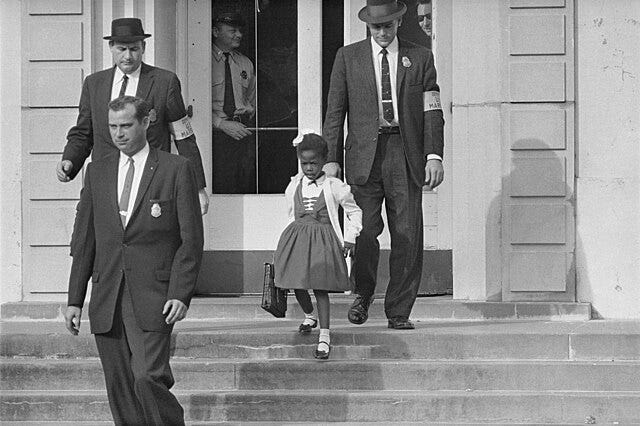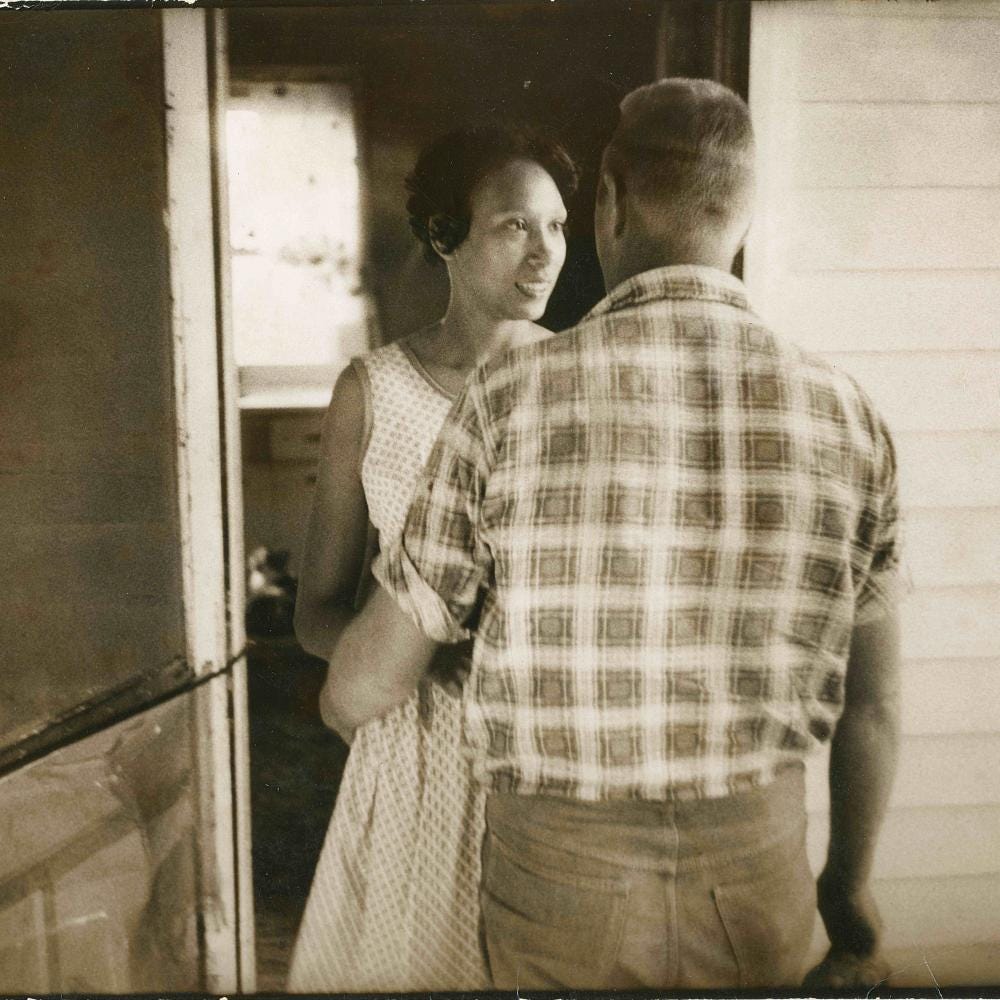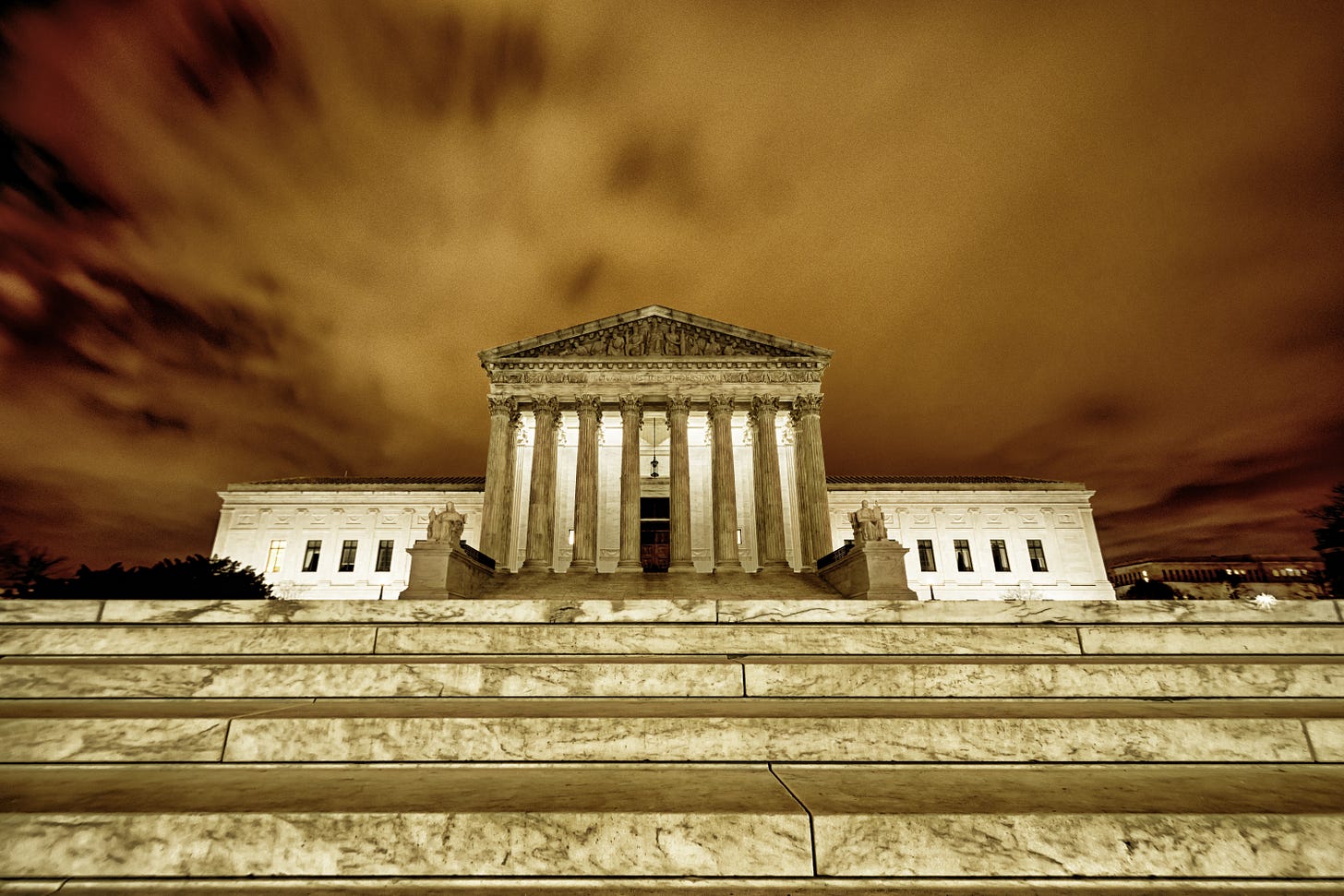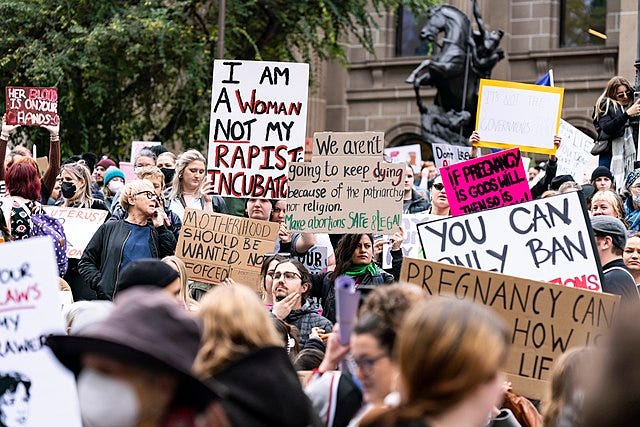The Supreme Court from Hell, Part I
For One Brief, Shining Moment ...
Had I known more of the history I’m about to tell you, I should never have felt as safe with the Supreme Court of the United States as I have. I confess that I always believed they would come through, that they would do what is just. They would stand up for the rights implied by any sane, present-day understanding of the term equality—corrected for the Founders’ own flaws, stupidities, cupidities, and bigotries regarding any being not white and male—and secure, protect, and expand the endowed rights and liberties of all Americans.
Perhaps I harbored a sappy, naive admiration for the Supremes because I came of age in the ‘50s, ‘60s and ‘70s. First there was Brown v Board of Education of Topeka, Kansas, the landmark segregation case argued, in 1954, by a spectacularly brilliant, profoundly inspiring, 48-year-old Thurgood Marshall. A unanimous Supreme Court decision declared that separate is never equal. The crisis that followed lasted decades, amid uneven application of the law and the use threats, violence, and intimidation. Attempts to use “zoning” to avoid school desegregation were met by bussing to achieve racial balance, and that was met by more threats, violence, and intimidation.
One image, from 1960, is indelible for me. It’s of tiny 6-year-old Ruby Nell Bridges, who was the sole Black student to desegregate a white grammar school in New Orleans, taking classes alone while protests raged within earshot.

For decades, salvos would be fired in this civil war over civil rights. It would take dozens of Supreme Court decisions to even begin to stop overt discrimination in college admissions, hiring, pay, benefits, and interracial marriage. One only has to look at police violence against Blacks now to know how deeply racist America still is. But Brown meant that what had gone on for 350 years was no longer legal. What was new was the hope that came with a stunningly courageous act by a unified Supreme Court.
As the Sixties dawned, I confess I was also a little spellbound by what the Broadway play called the “one brief, shining moment that was Camelot.” There was a palpable belief that we could create a truly beautiful culture of equality and justice. But the era was barely born before it was dealt one blow after another as murky operatives of murky interests murdered one after another of the American Round Table’s finest knights:
The first to die was President John F. Kennedy, who was assassinated in Dallas, Texas on November 22, 1963, as he rode in a motorcade with his wife, First Lady Jacqueline Kennedy, and Texas Governor John Connally (who was also wounded) and his wife Nellie.
John Kennedy’s murder was a profoundly traumatizing event for America. We had watched crises undermine the stability of some of the most historically stable foreign countries in the world—peaceful nations that devolved into brutal military dictatorships marked by mass arrests, the suspension of civil rights, and the summary execution of tens of thousands following the assassination of their heads of state. Though it’s true that Garfield, McKinley and Lincoln had been assassinated earlier in our history, we really felt it wouldn’t happen in modern America. And then it did.
Yet, Congress held strong and passed the Civil Rights Act of 1964—which amended and strengthened civil rights legislation passed in 1957 and 1960. The new law was the most sweeping expansion and protection of civil liberties since the laws that enabled and protected Reconstruction. The Civil Rights Act prohibited discrimination in public places, provided for the integration of schools and other public facilities, and made employment discrimination illegal.
Yet one of the most poignant and beautiful cases of the 1960s was that of Mildred and Richard Loving, an interracial married couple who were arrested in their home state of Virginia for violating the state’s anti-miscegenation laws—laws that prohibit sex and marriage between people of different races. The Lovings had married in Washington, DC, but had subsequently returned to their home state of Virginia, where their union was illegal. When taken into custody, they plead guilty and received a one-year prison sentences, suspended on the condition they did not cohabit in Virginia for 25 years.

After their convictions, the Lovings moved back to Washington, DC, but they were deeply dissatisfied with being separated from all their family in Virginia. Mildred Loving wrote to Robert F. Kennedy, then Attorney General of the United States, and asked for help. She got it. RFK sent her to the ACLU, and attorneys Bernard S. Cohen and Philip J. Hirschkop volunteered their services. The Lovings did not attend oral arguments made before the Supreme Court in their case, but Cohen read a message from Richard Loving to the justices:
“Mr. Cohen,” Richard Loving wrote, “tell the Court I love my wife, and it is just unfair that I can't live with her in Virginia.”
As in Brown v Board of Education, Chief Justice Earl Warren wrote the majority unanimous opinion that gave the verdict to the Lovings on the grounds that Virginia’s laws violated the 14th Amendment of the Constitution. The decision invalidated the miscegenation laws in every state in the country. Loving v Virginia paved way for the legalization of same-sex marriages that would come more than half a century later.
There were gains in these days—big ones—but hatreds festered and putrefied, and in 1968, assassination silenced two more of America’s most critically necessary voices. They would die just a little more than two months apart.
On April 4th, Martin Luther King, Jr., who awakened three generations of Americans, was shot to death as he stood on a 2nd floor balcony at the Lorraine Motel in Memphis.
Then June 6th, Robert F. Kennedy, then a candidate for the presidency, was shot and killed in the kitchen of the Ambassador Hotel in Los Angeles.
RFK’s death was shocking, and a dark shadow crept across the country. JFK’s death might have been seen as the act of a lone-wolf madman, but when RFK was killed, too, many felt, as Jackie Kennedy did, that Kennedys were being wiped out like pieces—important pieces—being removed from a chessboard so their voices would be silenced and their opinions, disempowered.
King’s death was, if anything, worse. It assaulted a specific group of people striving for long-withheld rights, and it was devastating for Blacks and for all those who supported their quest. Race riots—known as the Holy Week Uprising—broke out in more than 100 American cities, the largest protests coming in Kansas City, Baltimore, Chicago and Washington, DC. Forty-three people were killed, more than 3,000 were injured, and more than 20,000 were arrested.
It was during this week that I was tear-gassed in my university library, tracked every waking moment by a Lincoln Continental with white federal government tags, and photographed—by cameras shoved into my face—hundreds of times at protests.
Powerful forces didn’t want equality. They wanted white supremacy. They also wanted male supremacy.
Legal quests for women’s rights had been going on since the mid-19th century when the protests for voting rights began. These were ensured by passage of the 19th Amendment to the Constitution on August 8, 1920. The Women’s Movement flowered again in the 1960s. Women gained job access in every sector of the economy—even from major firms with long histories of discrimination. Divorce laws were liberalized. Employers were barred from firing pregnant women. Record numbers of women ran for office and were elected. In 1972 Congress passed Title IX of the Higher Education Act, which prohibited discrimination on the basis of sex in any educational program receiving federal funds. Now there were no more all-male schools. College athletic programs were required to sponsor and finance female sports teams. A woman no longer needed a male’s permission to get a credit card in her own name or sign her own contracts.
Even more consequential rights would come. Oral contraceptives hit the market in 1960. Within a few years, 1.2 million American women were using birth control. Religious authorities and many men didn’t like it. Legislatures scattered across the country slammed the pharmacy doors shut and threatened doctors.
Beginning in 1965, the first birth control cases had begun to make their way to the high court. First, married couples successfully sued for access to oral contraception. Then unmarried people challenged their disenfranchisement and won. The first abortion case made it to the Supreme Court in 1971.
But it was Roe v Wade in 1973 that would change every woman’s biological destiny, because this, the most fateful Supreme Court decision on women’s rights ever taken—until the one the Roberts Court took last week—put a woman’s reproductive fate fully into her own hands for the first time in history. But it wasn’t just a decision about a woman’s personal power: it was also a decision about a woman’s health.
Under the best conditions, pregnancy and delivery are dangerous; an illegal abortion is incredibly dangerous. In 1965, 17% of all reproductive deaths were caused by illegal abortions. A significant number of the women who died were women of color—women for whom another child portended a descent into abject and irreversible poverty for her and for all her children. After Roe, the risk of death of a woman from legal abortion was 1 in 1,000,000; the chance of death in a miscarriage or childbirth was far, far higher, 12.7 in 100,000—or 12,700 times higher than dying of complications of a legal abortion. Roe fought off poverty, and it legally ended the chaining of women to unwanted marriages and to bearing children they couldn’t afford to have or didn’t want to have.
In the three post-World War II decades of the 20th century, the strides made by women and people of non-white ethnicity and national origins were staggering. But there were winners and losers, and the losers were enraged. They would lie in wait, and they would use arguments steeped in ideologies riddled with white and male supremacy. And they would hide their bigotries behind religion, claiming they were doing God’s will when they stripped other people of power and dignity.
Religion is the enforcing agency of the patriarchy and misogyny, just as it was the enforcing agency of slavery and the brutal, centuries-long torture of Blacks.
To understand just how far the Radical Right in America has drifted from the original intent of the writers of the Declaration of Independence and the framers of the Constitution, we will pay a brief visit to five of the Founders whose vision of freedom and rights inspired what might have become the most egalitarian culture in history. Their vision, however, has been assaulted by the graft of the greedy and the will-to-power of bullies, and the ship of state has foundered upon the sharpest of rocks.
Coming Soon …
Part II: In the Beginning: Christianity, Deism, and the Founding Fathers




Well, please write when you can. I love reading your stuff!
The dates for the assassinations of MLK and RFK are reversed in this piece. MLK died in April and RFK in June. RFK gave an unforgettable calming speech to an audience of Black young people who learned of MLK's death from him. One comment I remember he said was, "A member of my family was killed like this too." I was drenched in tears.